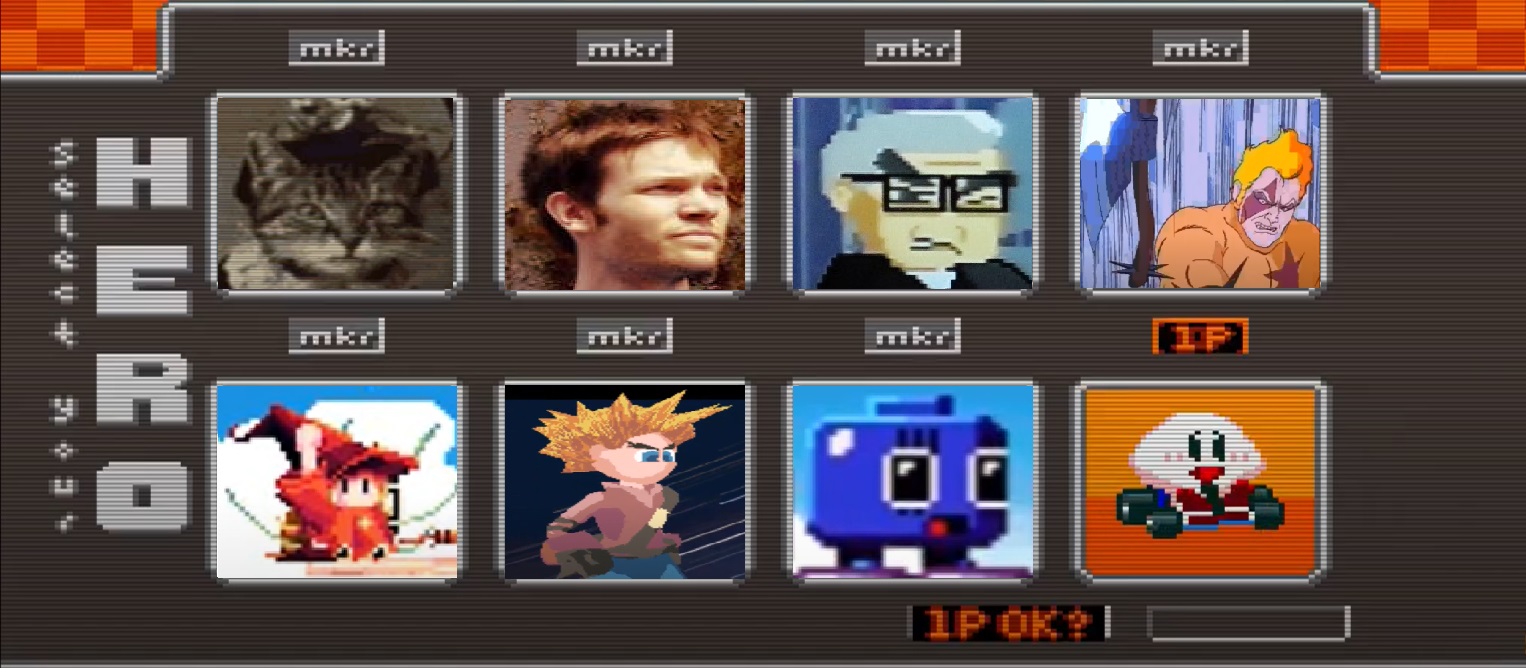Interview with Goldlocke
[If you would like to read the original version in German, just click here]
Not so long ago I reported about the SNESDEV Game Jam 2021, the first Game Jam of its kind. This one enriched the SNES world with 4 interesting results. The second place was taken by the developer Goldlocke with his game Dottie dreads naught. For me, this was the true winner of the SNESDEV Game Jam 2021, so I went straight to contacting the creator with the pseudonym Goldlocke.
Interview
So, Mr Goldlocke! What do you do for a living that you have such skills to venture into the complex homebrew programming of Super Nintendo games?
I currently work as a software engineer for a medium-sized company. However, it wasn’t my professional career that enabled me to develop SNES games, it was the other way around: In my youth and student days, I was primarily concerned with graphics and languages. In order to be able to fulfill my childhood dream of developing SNES games, I was forced to acquire programming skills autodidactically. When choosing a career, I decided to go against my original interests and choose computer science, after I had positive experiences with programming on SNES.
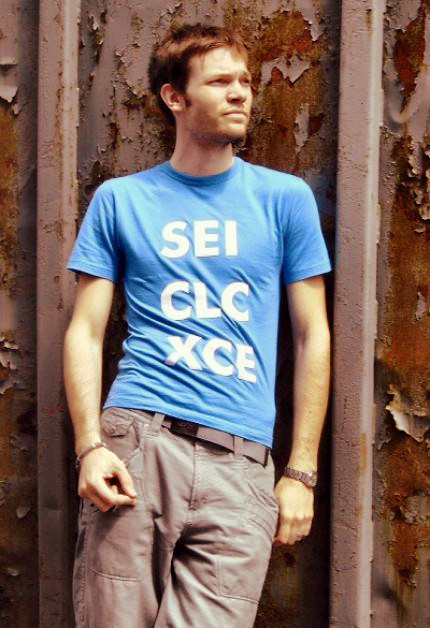
I started in the early 2000s with creating first ROM hacks and German translations of SNES games. I published my first SNES game in 2008. Looking back, I invested many, many hours. As is often the case with hobbies, it came naturally and didn’t feel like work.
Have you already published games under another name (or just Goldlocke)?
I published SNES games under the pseudonyms „d4s„, „Dieter von Laser“, „Goldlocke“ and others.
In the beginning, the focus of my game development was on the inclusion of a certain gimmick. Later, I switched to subordinating everything to the gameplay.
My first release for the SNES was, as alluded to above, 2008’s „N-Warp Daisakusen„, a simple multiplayer brawler for up to eight players. I had developed this game for the eponymous Nintendo fan meeting: SNES games supported up to 5 simultaneous players with one multitap in controller port 2 until then. When I became aware that, from a purely technical point of view, you could also connect two multitaps with a total of eight joypads to the SNES, it was clear to me that I had to develop a game for eight players simultaneously.
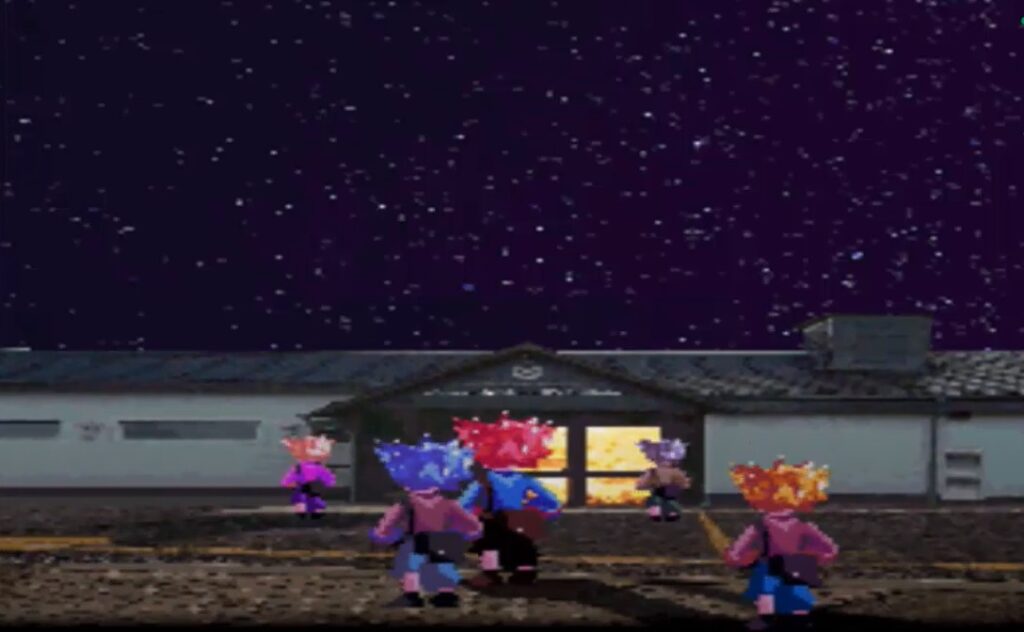
My next game, 2012’s Super Road Blaster, a port of the LaserDisc title Road Blaster, also known as Road Avenger, was based on a similar premise: Byuu, the author of the SNES emulator BSNES, had developed an expansion called MSU-1 that gave the SNES 4GB of memory and CD-quality audio. As a kid, I was fascinated by Road Avenger for the Sega Mega CD, which I only knew from the department store at the time. Then after ikari01 announced the hardware implementation of MSU-1 in his SD2SNES module, I knew that this gave me the opportunity to port the game to SNES. This was based on the then-current Iphone version. The biggest challenge for me was to get the existing video footage across to the SNES in acceptable full-screen quality.
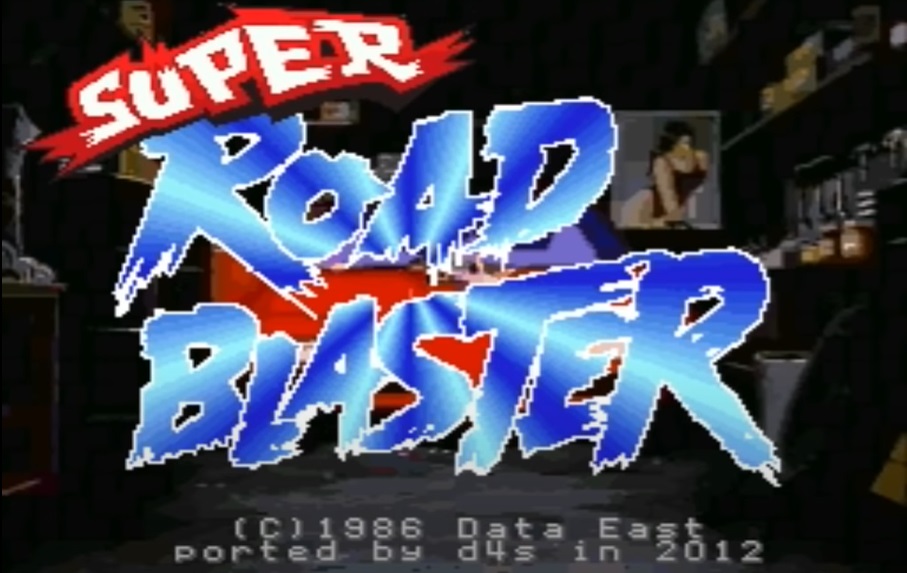
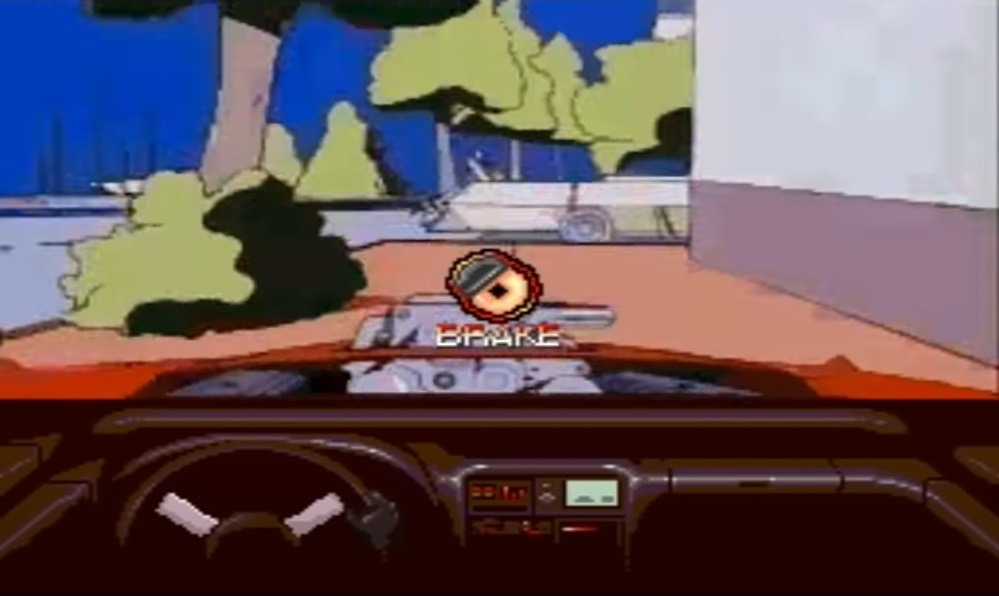
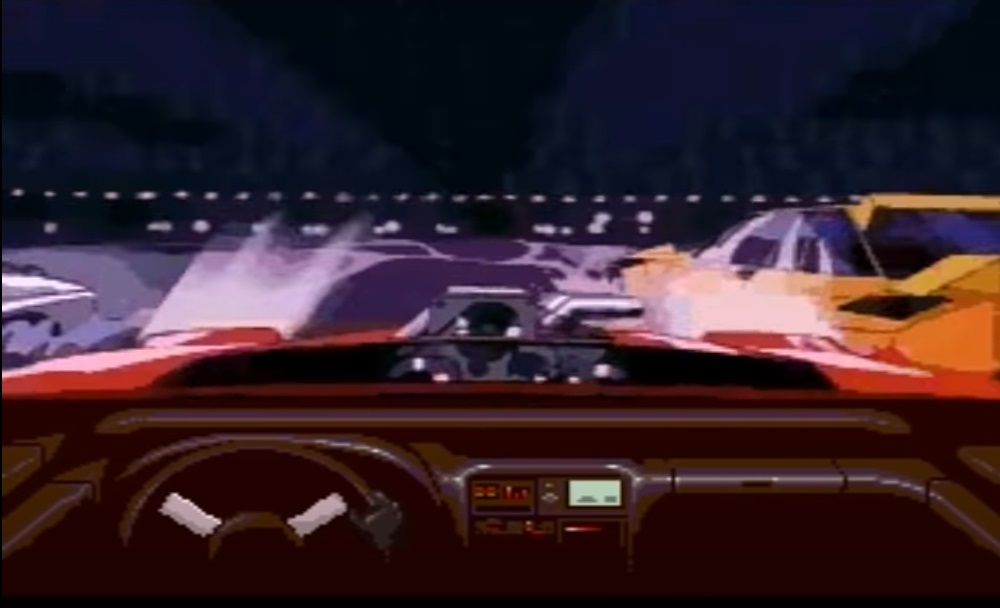
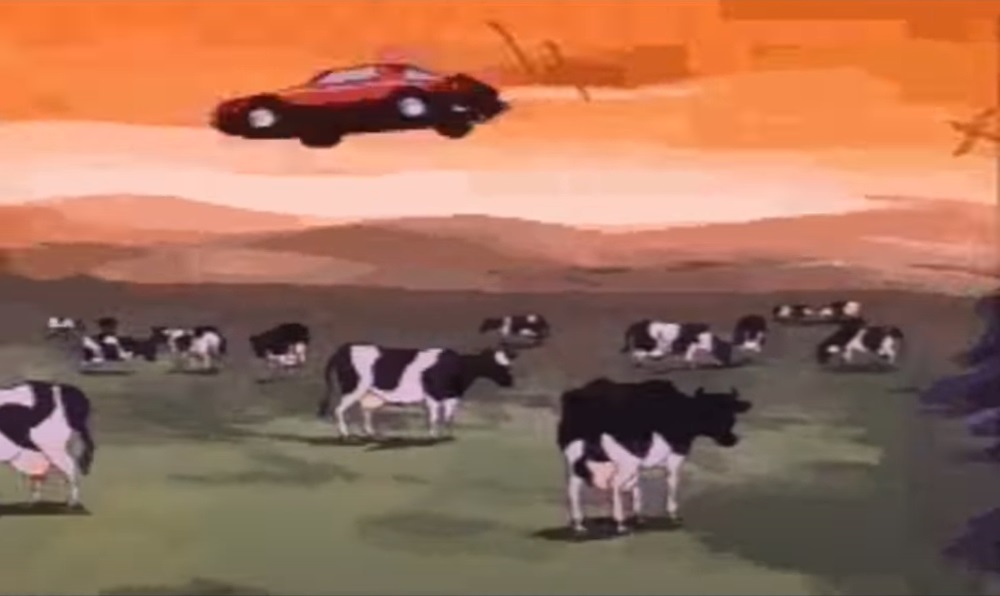
Jet Pilot Rising followed, the first version of which I completed within a self-imposed limit of 24 hours, thus following the game-jam spirit that is also relevant to Dottie. After I had been fascinated by the Rocket Barrel sequences of the Wii title „Donkey Kong Country Returns“ in their captivating simplicity, I wanted to realize a comparable single-button game for the SNES as well. Content-wise, the whole thing is sparse at best. The cat theme, by the way, is based on our two house cats at the time named „Dr. Schmaus“ and „Jet Pilot“, which then explains the title.
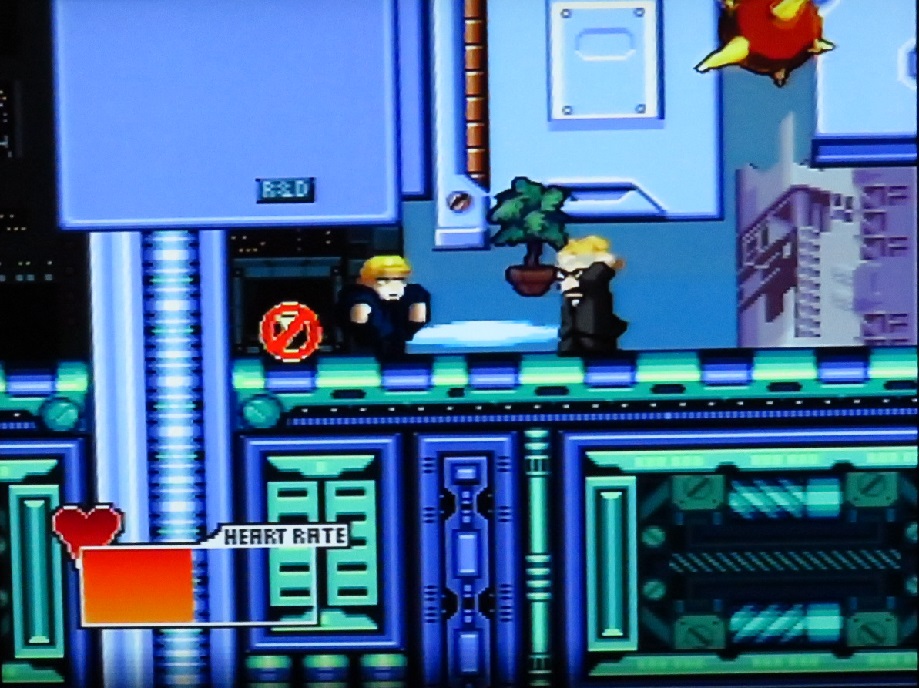
When in the meantime a copy of the Nintendo PlayStation appeared and with no$sns an emulator appeared that supported the system, I of course didn’t miss the chance to develop a game called „Super Boss Gaiden“ for it as well, which was also related to the system in terms of content. To open the game to a wider audience than the owner of the only known prototype of the Nintendo PlayStation at that time, I released a regular SNES ROM version in parallel. This was my first game where gameplay was actually the main focus during development.
Since I could only do the development based on no$sns and didn’t have access to the real hardware, it unfortunately turned out afterwards that the game didn’t work correctly on the latter. If the opportunity to debug the game on real hardware should arise again sometime, I would still be very happy to take it. When in the meantime a copy of the Nintendo PlayStation appeared and with no$sns an emulator appeared that supported the system, I of course didn’t miss the chance to develop a game called „Super Boss Gaiden“ for it as well, which was also related to the system in terms of content.
A few of my games have also remained unreleased so far, but I don’t usually talk about those. At least my very first attempt at a self-developed game, a mixture of RPG and dance/music game called „Chiptune Rocker“ for the SNES. For which I also (re)built my own instrument controllers in the form of a dance mat, a guitar and a drum kit, can still be found on YouTube today.
How did you hear about the SNESDEV Game Jam 2021?
Even though I’m a rather quiet representative with changing pseudonyms in the SNESDEV community, I always enjoy following the latest developments in this area and try to play and -if possible- buy all new releases to support the respective developers. I have been looking forward to the Game Jam since the first ideas and plans in the now unfortunately inactive forum on nesdev.com.
Goldlocke, did the SNESDEV Game Jam 2021 satisfy you overall or disappoint you due to the rather few results?
I had an incredible amount of fun developing Dottie and also made many new acquaintances in the community as a result. The conversations with the other three competitors were very enriching. I was even able to meet one of them personally in the meantime. Especially in this very small community, I always find the personal exchange extremely valuable. I was also very positively surprised by the feedback to my contribution. In contrast to some of my past publications, the feedback was very positive. About 250 people had registered for the Game Jam, and I personally had roughly expected 10 to 15 final contributions. Of course, it’s a bit of a pity that in the end there were only 4. Especially from long established members of the community I would have liked to see one or two more contributions.
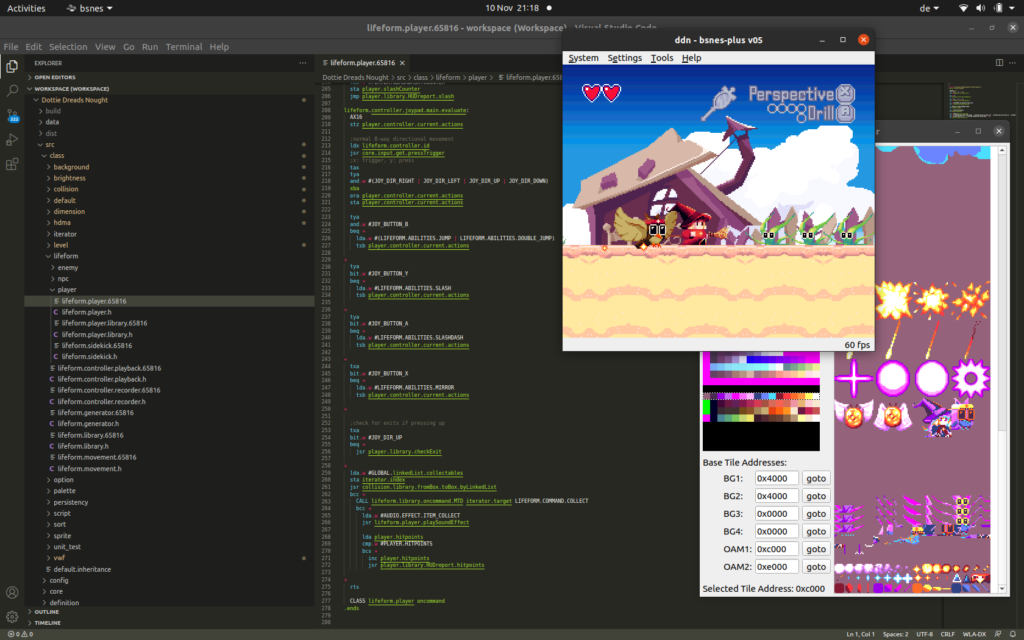
But the small number also shows how difficult it is to find access to the subject and how much time and effort you still have to invest before you can show results. If you want to develop a SNES game today, you can’t avoid dealing with the hardware on the deepest level, and in my opinion, this prevents many or ensures that projects are abandoned prematurely or are not finished in time despite the generous time of three months for the Game Jam.
If it were possible to provide a framework or tools that would abstract from that and allow newcomers to focus directly on gameplay and content creation, I’m sure the number of releases would increase. The Super Mario World hacking community, for example, does this quite well in my view. However, I have to say that I personally celebrated each and every one of the four entries to this year’s Game Jam and hope that overall we were able to send a positive signal.
If a SNESDEV Game Jam does come about in 2022, will you be participating (as Goldlocke?) again?
If my time schedule allows a participation, I would love to participate in a future SNESDEV Game Jam.
In the context of your development for Dottie dreads naught: Was there anything you would have liked to implement but couldn’t? Because it was too complicated or because the SNES just couldn’t do it?
Oh, there was an incredible amount! The published game is only a tiny part of the content I had originally planned. It was supposed to have eight worlds, each with its own levels, enemies and bosses, an exciting story told via in-game cutscenes, learnable skills, massive secrets, battery-supported savegames and a world map. After spending two months fine-tuning the core gameplay, I only had time for three levels, a handful of enemies, one boss, and a minimal fig leaf of a story. However, the obstacle was not complexity or the SNES’s power, but only time.
Are you going to develop Dottie dreads naught further or is the game finished? Somewhere online I could find out that you actually had planned more content…
The Game Jam version is ready. I would like to create a full-fledged game with the above scope, but I don’t want to promise what I can’t deliver.
Are you currently working on any other Super Nintendo homebrew games? If so, can you reveal anything about them?
I’m actually always working on at least one SNES project, but prefer not to talk about it until it’s finished. I like the idea that games used to be quietly developed and then more or less thrown over the fence to be published. I don’t like people coming at me or my games with expectations. The devlog on Twitter for Dottie was rather an exception for me, in the context of the Game Jam I wanted to promote the exchange with other participants as well as offer interested people a bit of entertainment.
How did you come up with the idea for Dottie dreads naught?
Two or three years ago I had pixelated the original idle animation of Dottie, but at the time I didn’t really know what to do with it. So it then sat around on my disk unused for a while. When the Game Jam was announced, I knew I was definitely going to do a 2D platformer and figured this animation would be a good base. At the start of the Game Jam the theme „Perspectives“ was announced and that didn’t suit me at first. In my distress I implemented the idea of changing the perspective to a sidekick for the purpose of discovering secrets. The inspiration for the gameplay was Super Mario World (especially the jump physics), ScourgeBringer, Celeste and Super Bat Puncher. The rest of the design was more or less based on ad-hoc decisions.
What are your personal favorite games on the SNES? And why?
It always depends a bit on my mood at the moment, but I count among my all-time favorites that always go:
- Super Mario World & Yoshis Island
- Donkey Kong Country 1 & 2
- Treasure Hunter G
- Secret of Mana & Seiken Densetsu 3 (Trials of Mana)
- Battletoads in Battlemaniacs
- Actraiser 2
- Terranigma
- F-Zero
- Front Mission: Gun Hazard
What was the reaction / feedback regarding Dottie dreads naught? Apart from the 2nd place of course 🙂
The response has been extremely positive. I don’t remember ever getting so little negative feedback on any of my releases. Judging from the YouTube videos, the game seems to have found a lot of friends, especially in South America, which made me very happy. I’ve had releases that have reached more people. Considering that I’ve only released a mini-game without any significant PR work, I’m satisfied with the level of distribution.
Maybe this is a stupid question or too difficult to answer. But how do you get the sprite animations to be so incredibly smooth in your game? Compared to some official SNES games from back then, yours looks much more professional. Are you using any chips differently? Or are you ultra precise with resource allocation?

Thank you for the praise. For the animations, I took a number of CPS2 games as a model, especially Marvel vs. Capcom, to maximize the graphical impact, which ultimately also benefits the gameplay. However, the animations don’t actually have a lot of frames. Dottie gets by with 3 – 4 frames per move for the most part. You can see this quite well in the attached picture of Dottie’s walking animation. There you can also see how the representation of a logical sprite (in this case Dottie) is automatically split into several 8×8 or 32×32 pixel SNES hardware sprites during the conversion phase to save space.
What do you need to know to program SNES homebrew games? (Apart from getting familiar with the subject matter 😀 ) The programming language C? C++? Assembler?
In my opinion, the most important thing is motivation and perseverance. Theoretically, C is sufficient for programming, with PVSneslib there is a library that provides a lot. In practice, however, you often have to implement time-critical things in assembler, as already mentioned above. Apart from that, you have to be interested in the hardware, you have to be persistent and you have to not get discouraged. The rest will come by itself.
The music for Dottie dreads naught is by Ninomiya Yuji. Who is that and how do you come to use his/her music 😀 ?
Yuji-San wrote the music for the SNES game Nekotako in the past, and approached me relatively near the end of the jam because he liked the gameplay demo I posted on Twitter.
I was very happy about this, because I had already liked Nekotako’s music very much. He then conjured up two tracks for Dottie in the few remaining days. Which I think fit in very well with the game. His music has that typical Japanese sensibility that also made many soundtracks of the SNES era so special. You can find his works at https://ninomiyayuji.com/ or https://www.youtube.com/c/NinomiyaYujiOfficial. I hope to work with him again in the future. By the way, if you like Dottie, you can support him by buying his CDs, I can only recommend at this point: https://animatone.booth.pm/.
Have you ever had the idea to publish a store where people can buy your game? Or to do this via the site of another developer studio? Quasi Goldlocke Studios 🙂
Of course, the idea of selling my games came to me at some point. I realized at some point that game development is a hobby for me and that I personally lose the fun as soon as I have to take care of the business side. But that doesn’t mean that you won’t be able to buy a future game of mine on a module. But I would probably leave the publishing to others.
Why SNES? Why don’t you develop for other systems that might be easier? Like for the Sega Mega Drive or Game Boy?
The SNES grabbed me in my youth and this fascination has lasted until today. Other systems don’t excite me much, I like to leave that to others.
Have you ever tried something simpler like Romhacks for the SNES? Especially for Super Mario World and Super Metroid there are quite extensive active communities. With your SNES programming skills, you could do a good job there. Is there possibly a Romhack from Goldlocke floating around?
I started with Romhacks almost 20 years ago, before I started developing my own games. In that sense, it was the next logical step. In doing so, I’ve been active in a relatively broad spectrum: Regular romhacks like Super Mario Kart R, German translation patches of games like Breath of Fire 2, Tales of Phantasia and Starfox 2, cracks of copy-protected games, expansions for the aforementioned Super Mario World community, bug fixes of unfinished prototypes, etc. I tried pretty much everything I felt like at one time or another.
But I have to say that I see the development of new games as the top class, because here you really create something of your own, independent. Therefore, there is currently no reason for me to return to ROM hacking.
What do you see as particular hurdles in SNES development for you and/or for newcomers?
The problem, in my view, is a lack of tools and frameworks that would allow newcomers to create content directly instead of having to reinvent the wheel, as is currently the case. Personally, I’m really just struggling with a lack of time, but that’s not SNES-specific. Video game development in general is a very time-consuming hobby.
Germany has many talents in retro gaming (you embody at least 3 of them as Goldlocke, d4s and Dieter von Laser) and even in SNES development. Have you ever teamed up with others to work together on a project? E.g. Goldlocke makes the game and Remute the music 🙂 ?
I always like to collaborate with friends and/or new acquaintances on projects when it comes up. However, I have also worked on joint projects that unfortunately came to nothing. „The Cult Of Remute“ impressed me, but I haven’t had contact with him yet.
Is there a game genre that you think is criminally underrepresented these days that used to be more common?
No, not at all. The zeitgeist is changing, and with it the currently popular genres. What the mainstream no longer serves is covered by countless indie titles that penetrate every niche, no matter how small. The selection has never been as large as it is today. If you still can’t find anything among the current titles, you can still enjoy the old classics.
If you were allowed to make a sequel to an SNES game, officially, license and all. For which game would you make a sequel and why?
I would perhaps attribute that less to the game and more to the respective development team. As a native of Cologne, I feel especially connected to Factor 5 and think it’s great how they are still involved in the retro community. By the way, I’m still waiting for „Plok 2“ and I also think that the Pickford Brothers are cool guys who would be fun to work with.
What resources would you recommend to people who want to try their hand at homebrew programming?
I liked the video series of Oziphantom very much, I can only recommend it here:
Otherwise, https://wiki.superfamicom.org/ actually bundles the existing knowledge quite well.
What from the SNES era are you missing in today’s games?
I wouldn’t think of that much. There are also current games that are based on the aesthetics of the SNES titles. Also, gameplay-wise, the foundation for many concepts was laid in the NES or SNES era, which are only being refined to this day. The fact that the SNES titles of that time left a much bigger impression on me than current titles was probably more due to me and my youthful enthusiasm.
The only homebrew fighting game for the SNES that I know of is X-Men Vs. Street Fighter, and that game didn’t turn out very well…. Can you think of any reason why fighting games are harder to make than people think?
X-Men Vs. Street Fighter is definitely unlicensed, but I wouldn’t call it homebrew. In Asia, there were companies that developed and sold unlicensed, proprietary SNES games. These games are also known by the collective term „Hong Kong Original“ (HKO). What they have in common is that they reference a franchise that was popular at the time of their release (Pokemon, Tekken 2, the X-Men Vs. Street Fighter you mentioned, etc.), are not licensed by Nintendo or the franchise owner, have copy protection, and appear to have been converted for SNES with the least amount of effort possible.
Although I wouldn’t want anyone to play these games, as mentioned above, many years ago I had the fun of cracking the HKOs I had, i.e. removing the copy protection. By the way, there is also a relatively recent unlicensed fighting game for SNES called „Unholy Night“. Which I would at least call a solid attempt.
Which Super Nintendo game do you think is absolutely overrated?
There are a few games from Western developers that were hyped at the time. But in terms of gameplay they don’t measure up to their Japanese counterparts and were overrated, at least at the time. Spontaneously, the Mortal Kombat series comes to mind.
Which Super Nintendo game is the Goldlocke insider tip par excellence?
Are there any insider tips for SNES at all? I have the impression that even the most obscure Super Famicom gems are now well-known and have found their fans. If you haven’t played Front Mission: Gun Hazard yet, I can warmly recommend it in the English fan translation. The game combines the action and RPG elements and is, in my view, the culmination of everything Squaresoft has done on the SNES.
Thanks to Goldlocke
Dear Goldlocke, thank you very much for the interview. I am extremely excited about what else you will publish. As Goldlocke / d4s / Dieter von Laser you are already the one with the most releases of homebrews. In fact, I’m sure Goldlocke has done more for the Super Nintendo than many companies that developed for the SNES in the 90s. Even after so many years after the Super Nintendo is no longer sold.
Hopefully you will add many more great games to the SNES world! Dottie and Super Boss Gaiden are already absolute smash hits for me personally.
Submit your review | |
